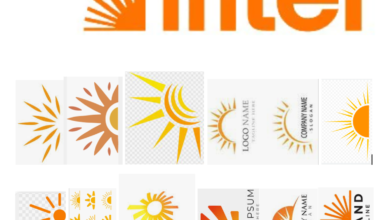[ad_1]
We all want to think our brand is unlike any other, but that is probably not the case. A lot of marketers talk about what makes their brand unique, but the reality is, there are very few truly unique products in the market. What really makes a brand stand out are the distinctive brand assets that set it apart from competitors.
So, just what are these distinct qualities? Read on to learn more about how to identify what makes your brand distinct and how to protect your brand’s most valuable assets.
What are Distinctive Brand Assets?
Distinctiveness has nothing to do with how a product functions or its selling propositions – it’s the elements of a brand that make it recognizable and different. When unique elements are tied back to a brand, they are known as “distinctive assets.”
Distinctive assets are valuable to a brand – they are used to measure how prevalent and unique customers think it is. The more prevalent and unique a brand is, the more recognition and loyalty it earns. And recognition + loyalty = profit.
Part of maintaining and protecting a brand’s distinctiveness is the consistent use of its core elements, which include logos, colors, typography, mascots, taglines and advertising style.
For example, there are many cola products on the market, but the color red with a white banner is unique to Coca-Cola and golden arches are unique to McDonalds. These brands have evolved and changed over time, but these distinct brand assets have remained consistent.

One of the strongest examples of distinctive brand assets are the Nike swoosh and “Just Do It” slogan. The swoosh logo can exist without any mention of the company name (as it does today) and the tagline is recognizable without the logo — that’s how distinct those assets are.

The Ehrenberg-Bass Institute for Marketing Science identified four situations when a brand should benchmark its distinctive assets:
- If you are considering changing or updating your brand’s identity and need guidance on what to keep.
- If you want to improve your branding/brand linkage scores.
- If you are planning new advertising and need to assess the potential of introducing new brand elements.
- If you are considering reviving an old brand element, but aren’t sure if it’s still relevant.
If any of these apply to you, it’s time to conduct an assessment of your distinctive brand assets.
How to Identify Your Distinctive Brand Assets
Identifying and measuring distinctive assets helps brands ensure they aren’t using an element that is associated with a competitor. Think of it this way: if you are using an element that is associated with another brand, you are basically spending your advertising budget on helping your competitor. You don’t want to do that now, do you? (No!)
One of the challenges brands face is identifying which assets are distinct when there is so much content being created for multiple channels and audiences. To help you identify your distinctive brand assets, Jenni Romaniuk of the Ehrenberg-Bass Institute developed a distinctive asset grid to help brands identify their distinctive elements:

The key criteria in the grid are prevalence and uniqueness. Marketers can control a brand’s prevalence; it often comes down to consistent use of distinctive assets in copy and packaging. But uniqueness is more difficult to control and measure because it largely boils down to what your competitors are doing.
It’s not enough for an element to simply be used as part of the brand’s identity. The most valuable distinctive brand assets are both prevalent and unique – consumers link the asset to the brand and there aren’t any other brands associated with that element.
Protecting and Managing Your Distinctive Brand Assets
Distinctive brand assets do not develop overnight; it takes time and consistency for consumers to make the link between the assets and the brand. Once you have identified your brand’s distinctive assets, the entire team must work to protect them. Here’s how:
- Start by organizing them. Here are seven timesaving tips for managing your brand assets.
- Know the difference between files and brand assets. It’s an important distinction, and one that will help you down the line.
- Rely on what your consumers say about your brand’s uniqueness – do not rely on what your marketing department has to say about it.
- Use your distinctive assets in every single marketing campaign – don’t change the elements and heavily weigh the elements of a brand refresh.
- Use the same distinctive assets in advertising and packaging.
- Always make sure your competitors aren’t using a similar brand element – continue to stay informed.
- When implementing a new brand element, always use it in combination with the name of your brand.
When change is the only constant in your branding, valuable distinctive assets are lost, throwing away years of investment and consumer recognition. Efficient and organized digital asset management is the key to creating consistency.
When managing assets is streamlined, the team can finally focus on the most important goal – building a strong brand.
Want to learn more about managing your distinctive brand assets? Find out how Brandfolder allows you to organize, update and share your most valuable assets — all from a single location.
Source link






